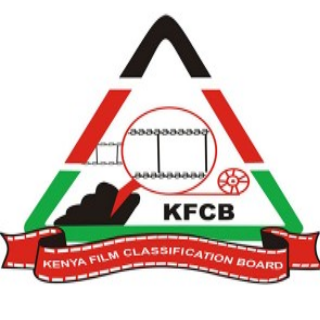Related Research Articles
The Motion Picture Associationfilm rating system is used in the United States and its territories to rate a motion picture's suitability for certain audiences based on its content. The system and the ratings applied to individual motion pictures are the responsibility of the Motion Picture Association (MPA), previously known as the Motion Picture Association of America (MPAA) from 1945 to 2019. The MPA rating system is a voluntary scheme that is not enforced by law; films can be exhibited without a rating, although most theaters refuse to exhibit non-rated or NC-17 rated films. Non-members of the MPA may also submit films for rating. Other media, such as television programs, music and video games, are rated by other entities such as the TV Parental Guidelines, the RIAA and the ESRB, respectively.
A motion picture content rating system is an organization designated to classify films based on their suitability for audiences due to their treatment of issues such as sex, violence, or substance abuse; their use of profanity; or other matters typically deemed unsuitable for children or adolescents. Most countries have some form of rating system that issues determinations variously known as certifications, classifications, certificates, or ratings. Age recommendations, of either an advisory or restrictive capacity, are often applied in lieu of censorship; in some jurisdictions movie theaters may have a legal obligation to enforce restrictive ratings.

The Film Classification and Rating Organization, also known as Eirin (映倫), is Japan's film regulator. Eirin was established on the model of the now-defunct American Motion Picture Producers and Distributors Association's Production Code Administration in June 1949, on the instructions of the US occupation force. It classifies films into one of four categories depending on their suitability for viewing by minors of different ages.
In broadcasting, the watershed is the time of day after which programming aimed towards mature or adult audiences is permitted.
The Canadian Home Video Rating System (CHVRS) is a voluntary rating classification system applied to home video products such as VHS and DVDs. It is administered by the Motion Picture Classification Corporation of Canada, a subsidiary of the Motion Picture Association – Canada (MPA–C). Ratings are "averaged" from those assigned by participating provincial film boards: Alberta, British Columbia, Manitoba, Maritimes, Ontario and Saskatchewan and applied by the distributor to home video packaging.
Television content rating systems are systems for evaluating the content and reporting the suitability of television programs for children, teenagers, or adults. Many countries have their own television rating system and countries' rating processes vary by local priorities. Programs are rated by the organization that manages the system, the broadcaster, or the content producers.
The Ontario Film Review Board is an inactive agency of the government of the Canadian province of Ontario that was formerly responsible for that province's motion picture rating system. Until 2015, the board reported to the Minister of Consumer Services but as of 1 October 2015, the board was overseen by the Ontario Film Authority. The board's activities were based on the Film Classification Act, 2005.
The Maritime Film Classification Board is a government organization responsible for reviewing films and granting film ratings in New Brunswick, Nova Scotia and Prince Edward Island.
The TV Parental Guidelines are a television content rating system in the United States that was first proposed on December 19, 1996, by the United States Congress, the television industry and the federal communication commission Federal Communications Commission (FCC), and went into effect by January 1, 1997, on most major broadcast and cable networks in response to public concerns about increasingly explicit sexual content, graphic violence and strong profanity in television programs. It was established as a voluntary-participation system, with ratings to be determined by the individually participating broadcast and cable networks.
The British Columbia Film Classification Office, part of Consumer Protection BC in the Canadian province of British Columbia, is responsible for rating and censoring films under the province's Motion Picture Act. The BCFCO film ratings are also used by Manitoba, Ontario, and Saskatchewan by bilateral agreement.
Censorship in Singapore mainly targets political, racial, religious issues and homosexual content as defined by out-of-bounds markers.

The Movie and Television Review and Classification Board is a Philippine government agency under the Office of the President of the Philippines that is responsible for the classification and review of television programs, motion pictures and home videos.
The Manitoba Film Classification Board (MFCB) was a provincial government organization responsible for rating films and video games rented, sold, or shown in the province of Manitoba. In mid 2018, the Board was dissolved, with its duties being outsourced to British Columbia for film classifications, and transferred to the Entertainment Software Rating Board (ESRB) for video games.
Motion picture ratings in Canada are mostly a provincial responsibility, and each province has its own legislation regarding exhibition and admission. For home video purposes, a single Canadian Home Video Rating System rating consisting of an average of the participating provincial ratings is displayed on retail packages, although various provinces may have rules on display and sale, especially for the R and A categories.
The Australian Commercial Television Industry Code of Practice is a self-regulatory code adopted by free-to-air broadcasters in the Australian media. Although developed by industry, the code has been registered with the Australian Communications and Media Authority (ACMA).
The Australian Classification Board is an Australian government statutory body responsible for the classification and censorship of films, video games and publications for exhibition, sale or hire in Australia. The ACB was established in 1970 and was once part of the Office of Film and Literature Classification (OFLC), which was dissolved in 2006. The Department of Communications and the Arts provided administrative support to the ACB from 2006 until 2020, when it was merged into the 'mega department' of the Department of Infrastructure, Transport, Regional Development and Communications. Decisions made by the ACB may be reviewed by the Australian Classification Review Board. The ACB now operates under the Commonwealth Classification Act 1995. The ACB is made up of a director, a deputy director, and three other board members, appointed by the government for three- or four-year terms, and temporary board members. The ACB is located in Sydney, New South Wales.
The Australian Classification Review Board is a statutory censorship and classification body overseen by the Australian Government. The corporate body is responsible for reviewing classification decisions made by the Australian Classification Board concerning films, video games and publications for exhibition, sale or hire in Australia. Review decisions need to be initiated by an appeal from a previous applicant, most commonly referred to as "aggrieved party", or a Federal or State Attorney-General.

The Finnish Board of Film Classification was an official institution of the Finnish Ministry of Education. From 1946 until the end of year 2011, the VET/SFB was responsible for inspecting and rating the content of movies and video games. In the beginning of 2012, the VET/SFB was dissolved and its functions were transferred to the Finnish Centre for Media Education and Audiovisual Media, likewise operating under the Ministry of Education.
Media regulation in the Republic of Singapore is carried out by the Info-communications Media Development Authority (IMDA) and effected by various laws.

The Kenya Film Classification Board is a state corporation that operates under the Government of Kenya whose mandate is to "regulate the creation, broadcasting, possession, distribution and exhibition of films by rating them." The Board was founded in 1963 with the commencement of the laws outlined in the Films and Stage Plays Act of 1962 and has since involved itself in the rating and classification of films and television programmes. More recently, it has caused controversy by banning several films, such as the American box office success The Wolf of Wall Street, the Kenyan film Stories of Our Lives, Rafiki, and the 2015 film Fifty Shades of Grey based on the novel of the same name. The Board has also regulated television content, including advertisements.
References
- ↑ MacDonald, Alan H. (May 3, 1996). "Lorne MacRae Memorial Lecture". University of Calgary. Archived from the original on July 13, 2006.